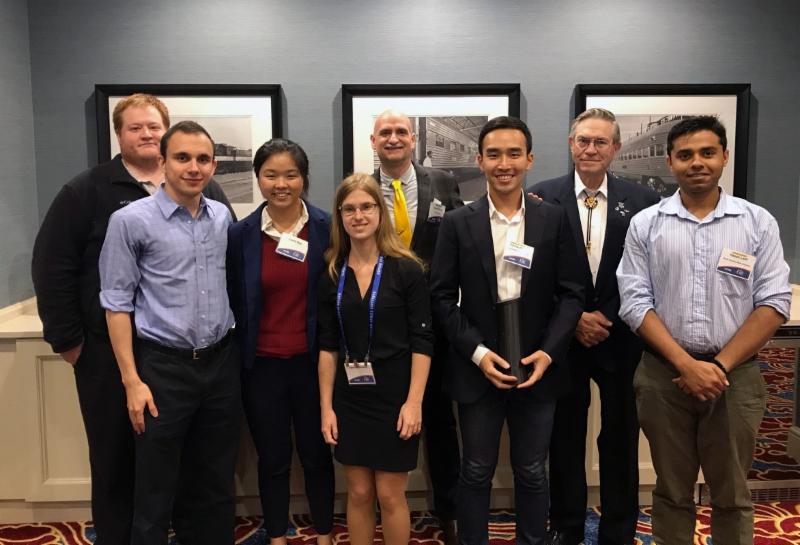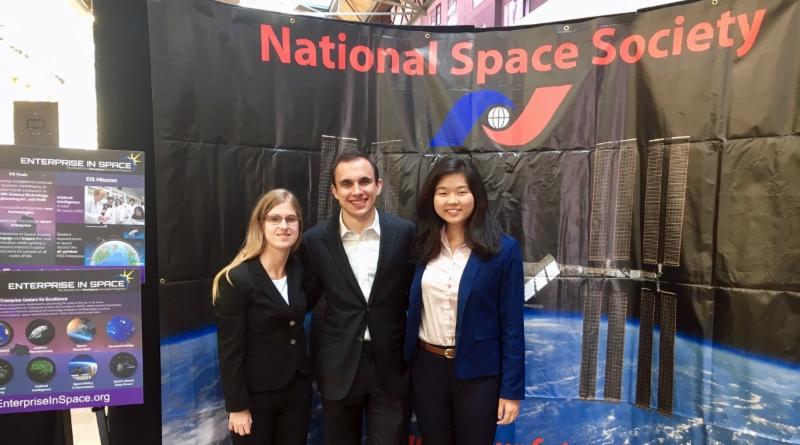In order to drive innovation forward in space manufacturing technology, Enterprise In Space (EIS), a non-profit program of the National Space Society (NSS), has chosen the grand-prize-winning university students in its “Print The Future” competition. Announced at its 36th annual NSS International Space Development Conference® (ISDC®) in St. Louis, Missouri last weekend, the winner is Team ProtoFluidics’ microfluidic modules from University of Pennsylvania. Undergraduate students Adam Zachar, Laura Gao and Jaimie Carlson designed 3D-printable modules that enable rapid prototyping of microfluidic experiments aboard the ISS.
Through the “Print The Future” competition, EIS-along with Kepler Space Institute, Made In Space (MIS), Sketchfab, 3D Hubs, and Prairie Nanotechnology offered university teams a chance to 3D print a NewSpace experiment aboard the International Space Station (ISS). University teams were invited to create designs that push the bounds of 3D printing in microgravity to serve humanity in expanding its presence among the stars.

In this competition, winners were chosen based on the scientific and engineering merit, commercial potential, and originality of the designs. “With our 3D-printable microfluidic modules, researchers can easily design custom microfluidic circuits to conduct experiments for disease diagnosis, chemical analysis, protein crystallization, and more, capitalizing on the microgravity on station,” said Adam Zachar. “This process allows researchers to bypass the cost of fabricating and transporting conventional microfluidics to orbit,” he said.
Zachar added, “The most valuable economic advantages to 3D printing microfluidics on the ISS are the immense time and cost savings to researchers. Currently, sending a microfluidic experiment up to the ISS can cost as much as $27,000 for the launch and up to 12 months of wait time. 3D printing could significantly reduce these costs and delays by allowing researchers to fabricate their experiments on station, bypassing the launch completely.”

Team ProtoFluidics will work with MIS to 3D print their project on Earth as a test before printing aboard the ISS. The project will be 3D printed on the ISS before the end of the year. The project will be returned to Earth, where the winner will be able to leverage Prairie Nanotechnology’s advanced research equipment to study the results.
One member of the grand prize team will also receive the R.S. Kirby Memorial Scholarship, valued at $5,000, from the Kepler Space Institute to be applied towards a full certificate program. The R.S. Kirby Memorial Scholarship aims to encourage space advocates the world over.
The first place runner up was Team H2’s H2 Capsule. University of Pennsylvania Masters students Hyung Jin Yoo and Haimin Yie created a capsule that early Mars Explorers can use to store objects and media to convey their stories and personalities to future generations, as a means of confronting and accepting death as a possible outcome of their mission.
The second place runner up was Team Bengal Tigers’ Multi-Purpose Wrench. North Carolina State University PhD student Hasan Latif and Bangladesh University of Engineering and Technology Masters students Habibur Rahman, Ankhy Sultana, Shourav Ahmed and Tavila Sharmin designed a 3D printable tool that reduces the need for multiple different tools required for loosening and tightening various sizes of nuts, bolts and screws.
All finalist teams presented their experiments at the ISDC®. All finalist entries are on display on the popular 3D modeling community Sketchfab. To learn more about the competition, visit the contest page at enterpriseinspace.org/print-the-future. EIS thanks all who have participated in our competition this year.


















